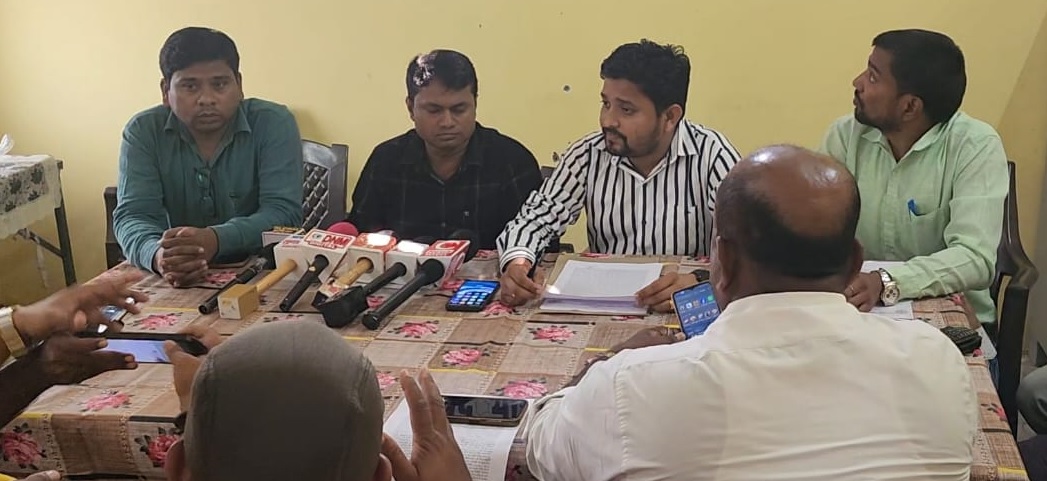What Are Internal Controls? A Comprehensive Guide
Content
The more extensively a control is tested, the greater the evidence obtained from that test. Whether the control relies on performance by an individual or is automated (i.e. Controls that mitigate incentives for, and pressures on, management to CARES Act falsify or inappropriately manage financial results. Supervision or monitoring of operations – observation or review of ongoing operational activity. It is a means by which an organization’s resources are directed, monitored, and measured.
On average, companies lose between approximately 10%-20% of their projected savings to maverick spending each quarter. Internal controls help by catching and curtailing unnecessary spending to ensure better company health.
Optimization and automation are critical when ensuring the effectiveness of internal controls. Companies view and use these controls as an “interlocking set of activities,” ensuring redundancy beyond normative operating procedures within an organization. Assets are safeguarded, errors are minimizable, and operations are conducted in a manner befitting the company. Risk assessment for financial reporting purposes in an entity’s identification, analysis, and management of risks relevant to the preparation of financial statements that are fairly presented in conformity with generally accepted What is bookkeeping accounting principles. The auditor should determine the effect his or her adverse opinion on internal control has on his or her opinion on the financial statements. Additionally, the auditor should disclose whether his or her opinion on the financial statements was affected by the adverse opinion on internal control over financial reporting. The auditor must evaluate the severity of each control deficiency that comes to his or her attention to determine whether the deficiencies, individually or in combination, are material weaknesses as of the date of management’s assessment.
Internal Control: Definition, Types, Principles, Components
Internal control can provide reasonable, not absolute, assurance that the objectives of an organization will be met. The concept of reasonable assurance implies a high degree of assurance, constrained by the costs and benefits of establishing incremental control procedures. Internal controls are intended to prevent errors and irregularities, identify problems and ensure that corrective action is taken. In many cases, process owners within your department perform controls and interact with the control structure on a daily basis, sometimes without even realizing it because controls are built into operations. A well designed process with appropriate internal controls should meet most, if not all of these control objectives. Accounting internal controls are not a recent development, these have been in place for a long time.
If the accounting control is not strong, the auditor may have to resort to a detailed checking of transactions, events, and practices in the accounting system. On the other hand, administrative controls seek to achieve the aim of management inefficient and orderly conduct of transactions in non-accounting areas. Internal control helps the management to prepare and implement effective plans by providing correct and factual information. Internal control helps the auditor in his/her work, detecting all the errors and frauds which are committed in the books of accounts. Internal control helps to protect the assets of the business from misuse, theft, accident, etc.
Financial and accounting operations must be separated, i.e., handling of cash and the recording of the movement thereof types of internal control in accounting should be done by different persons. The definition of a material weakness, as provided in paragraph A7.
- An internal control is a process or procedure put in place to protect assets, promote effective operations, and ensure accurate accounting and record keeping.
- Further, the auditor should evaluate the effects of management’s refusal on his or her ability to rely on other representations, including those obtained in the audit of the company’s financial statements.
- The petty cash should be counted and reconciled to the cashbook balance at least weekly.
- Typically, management is responsible for developing an appropriate system of internal controls, but every employee is responsible for following and applying those practices.
- The Board of Trustees delegates authority through the Chief Executive for the day-to-day running of the organisation.
While manual errors in finance may never be 100% nullified, they are minimizable to a great extent by simply following internal control protocols. You can do this by maintaining visibility over the actions of involved stakeholders. Minimize risks at every step of the way for more streamlined and efficient financial operations and transactions.
Ways To Identify And Fix Internal Control Weaknesses
Internal controls are processes and records internal to a company, specializing in upholding and maintaining financial CARES Act and accounting integrity of information. Material weaknesses can be a huge, ongoing cost to an organization.
The auditor should apply the principles underlying those paragraphs to assess the competence and objectivity of persons other than internal auditors whose work the auditor plans to use. The following auditing standard is not the current version and does not reflect any amendments effective on or after December 31, 2016. A board of directors oversees the entire organization, providing governance over the management team. The COSO definition relates to the aggregate control system of the organization, which is composed of many individual control procedures.
Principles Of Internal Control
For example, an administrative control is regular backups of critical systems. If a breach occurs, you will only be able to retrieve the data from the time of the last backup. A data backup control is useless if the organization does not back data regularly, or does not verify that backups can be successfully recovered. A memorandum may be used to supplement the other forms of documentation by summarizing the auditor’s overall understanding of the control structure, individual components of the control structure, or specific control policies or procedures.
Established policies, procedures, and documentation that provide guidance and training to ensure consistent performance at a required level of quality. Detective controls are designed to find errors or problems after the transaction has occurred. Detective controls are essential because they provide evidence that preventive controls are operating as intended, as well as offer an after-the-fact chance to detect irregularities. Liquid assetsalways need to be protected more than illiquid assets because they are more easily stolen. Take cash for example.Cashis the most liquid asset and can be pretty easily stolen by any employee who handles it.
Departments conducting research are good examples of areas where sound internal controls are needed. Research departments that have grants and contracts with outside sponsors are at risk that inappropriate charges will be posted to the project account, perhaps affecting current or future funding. Each department not only has the responsibility to ensure that all of their transactions are have been processed properly, but also to ensure that other researchers are not “hiding” improper transactions in the department’s accounts. A key control is an action your department takes to detect errors or fraud in its financial statements. Your department should already have key financial review and follow-up activities in place.
Internal controls are the mechanisms, rules, and procedures implemented by a company to ensure the integrity of financial and accounting information, promote accountability, and prevent fraud. Besides complying with laws and regulations and preventing employees from stealing assets or committing fraud, internal controls can help improve operational efficiency by improving the accuracy and timeliness of financial reporting. The Sarbanes-Oxley Act of 2002, enacted in the wake of the accounting scandals in the early 2000s, seeks to protect investors from fraudulent accounting activities and improve the accuracy and reliability of corporate disclosures.
Examples Of Internal Controls
External factors like the law may influence some controls, and other internal controls may be initiated due to a CEO’s or finance leader’s concerns over a specific financial process or procedure. However, several means exist to ensure the effectiveness of internal controls. This includes financial transaction documentation, procurement processes, product design projects, product testing, and internal audits. Before you can inspect procedures to discover weaknesses, you need a full inventory of the processes currently in place. In addition to reporting to the committee, companies are required to report a material weakness to the Securities Exchange Committee . When this information is made known, companies may face increased costs due to legal fees and reputational risks, as investors might lose confidence in the company and its stocks.
In addition, preventative internal controls include limiting physical access to equipment, inventory, cash, and other assets. Document management and workflow tools are more capable of interacting with other software than are generic products and can address relatively straightforward functions such as report tracking . These products monitor workflows and processes—applying a business unit’s self-defined rules—to make them more event-driven and thus easier to manage. They allow users to perform detailed indexing and searching of multiple document types, including e-mail, flowcharts and narratives, to organize and retrieve text, images and numeric data. They also enable companies to collect and integrate data from their various accounting systems and to create links between separate business units’ discrete business processes. Companies using them can better understand and analyze the frequency of control activities, categorize internal control types, test their effectiveness and reveal relationships between key job responsibilities and their place in the workflow.
The best of them establish and maintain a relationship between the overall business and its core systems and provide an internal control architecture that changes to meet the organization’s evolving compliance needs. Independent checks on performance, which are carried out by employees who did not do the work being checked, help ensure the reliability of accounting information and the efficiency of operations. For example, a supervisor verifies the accuracy of a retail clerk’s cash drawer at the end of the day. Internal auditors may also verity that the supervisor performed the check of the cash drawer. While preparing all the necessary financial documents for company leaders, Ted also has to keep in mind that current and potential creditors and investors are also interested in this information. He knows that whether it’s good or bad, he has to report information that is truthful and accurate. Because the FASB and GAAP require that it be, which exemplifies the third purpose of internal controls.
Last Reviewed
Monitor the agency’s financial activity on a regular basis, comparing actual to budgeted revenues and expenses. Initial and date the bank statements or reconciliation report to document that a review and reconciliation was performed and file the bank statements and reconciliations. When evaluating such software, companies should speak with multiple vendors in each category and observe a demonstration of every product to understand the value it can add to the organization.
Regulatory and technical reference tools provide a strong environment for obtaining accurate and up-to-date regulatory information for Online Accounting an organization. Many of today’s commercial software products can help companies comply with the provisions of the Sarbanes-Oxley Act.
Assertions are representations by the management embodied in the financial statements. Further such fixed assets must be disclosed and represented correctly in the financial statement according to the financial reporting framework applicable to the company. All staff members should be responsible for reporting problems of operations, monitoring and improving their performance, and monitoring non-compliance with the corporate policies and various professional codes, or violations of policies, standards, practices and procedures. Their particular responsibilities should be documented in their individual personnel files. Internal Audit evaluates Mercer’s system of internal control by accessing the ability of individual process controls to achieve seven pre-defined control objectives. The control objectives include authorization, completeness, accuracy, validity, physical safeguards and security, error handling and segregation of duties.
Store inventory in a warehouse or separate area with restricted access to employees with custodial responsibilities. Restrict access to assets or information based on assigned responsibilities.
Financial StatementsFinancial statements are written reports prepared by a company’s management to present the company’s financial affairs over a given period . These statements, which include the Balance Sheet, adjusting entries Income Statement, Cash Flows, and Shareholders Equity Statement, must be prepared in accordance with prescribed and standardized accounting standards to ensure uniformity in reporting at all levels.
It is easy to circumvent internal controls, given that the effectiveness or performance of a company’s internal controls are left to the opinions and judgments of humans. In certain contra asset account cases, auditors give opinions based on how efficient the operations of a company are without paying any thorough attention to the internal control measures and rules.
Appendix C, which provides direction on modifications to the auditor’s report that are required in certain circumstances. 2/ This auditing standard supersedes Auditing Standard No. 2, An Audit of Internal Control Over Financial Reporting Performed in Conjunction with An Audit of Financial Statements, and is the standard on attestation engagements referred to in Section 404 of the Act. The magnitude of the potential misstatement resulting from the deficiency or deficiencies.
The management style and the expectations of upper‐level managers, particularly their control policies, determine the control environment. An effective control environment helps ensure that established policies and procedures are followed.































